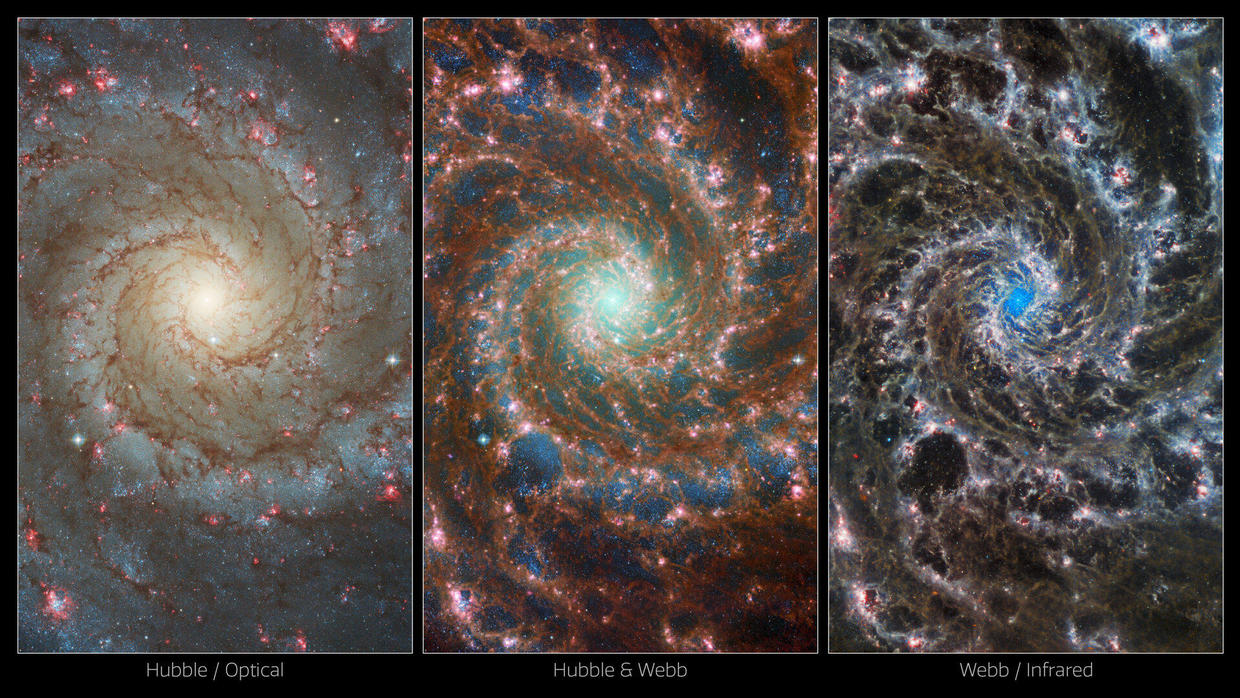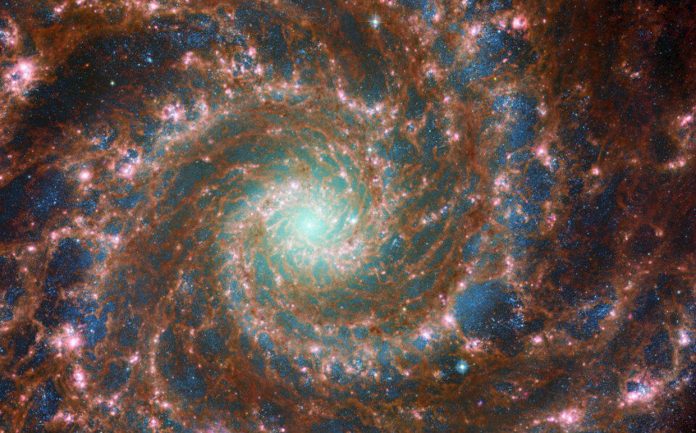A collaboration of the two greatest telescopes has resulted in this stunning image of the phantom galaxy Messier 74 located 32 million lightyears away
The European Space Agency is once again fuelling our need for more jaw-dropping pictures of distant galaxies and worlds, the newest release combines the Hubble Space Telescopes‘ strong vision at ultraviolet and visible wavelengths with the James Webb Space Telescopes’ sensitivity at infrared wavelengths.
Webb and Hubble collaboration
The Hubble telescope, launched in 1990, has been providing beautiful images to researchers and the general public for decades. The James Webb Space Telescope however is the newest and flashiest project going on right now. Being the most expensive science probe ever built, Webb has already provided the most detailed images of space ever seen.
“By combining data from telescopes operating across the electromagnetic spectrum, scientists can gain greater insight into astronomical objects than by using a single observatory — even one as powerful as Webb,” the space agency said.
Messier 74, the Phantom Galaxy
Made up of around 100 billion stars and two symmetrical ‘arms’ Messier 74 (M74) is in a subclass of spiral galaxies referred to as a ‘grand design spiral’ meaning its arms are better defined than others.
By combining equipment and using Webb superior technology, the teams were able to reveal gas and dust spiralling out from the heart of the phantom galaxy. Webb has been able to capture the galaxy using its mid-infrared instrument

Looking at the images separately and together just illustrates how science is only continuing to further our understanding of space and our ever-expanding universe.
The dust in the image is coloured red, young stars can be seen in blue and older stars are yellow, marked by a green glow when the colours combine.
According to the ESA: “The addition of crystal-clear Webb observations at longer wavelengths will allow astronomers to pinpoint star-forming regions in the galaxies, accurately measure the masses and ages of star clusters, and gain insights into the nature of the small grains of dust drifting in interstellar space.”











